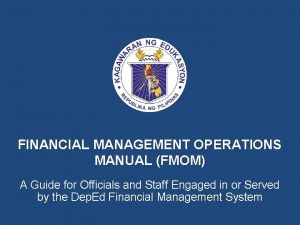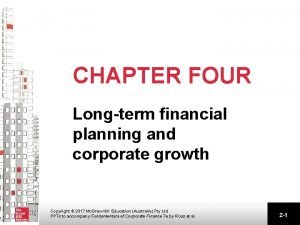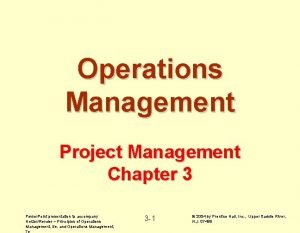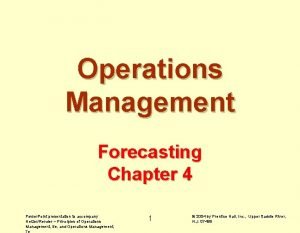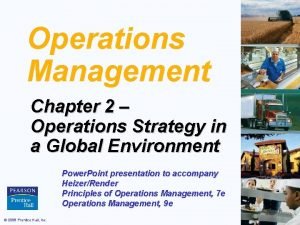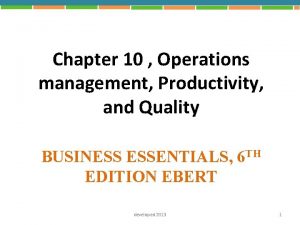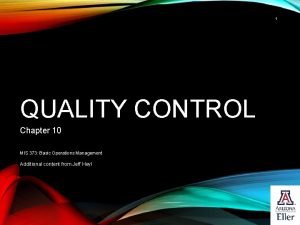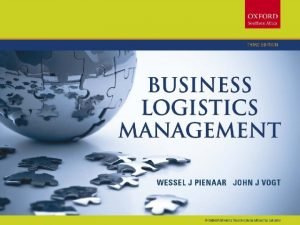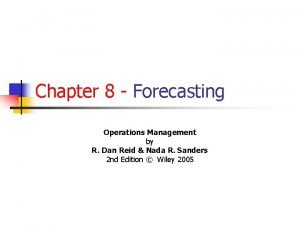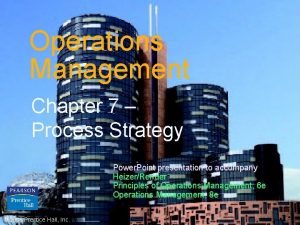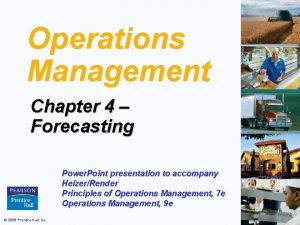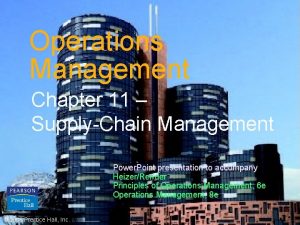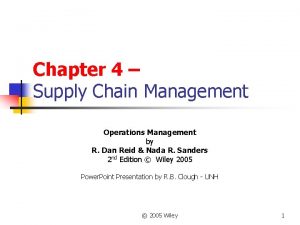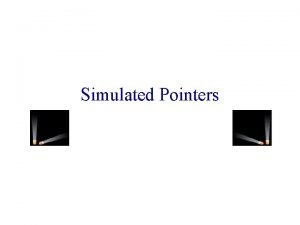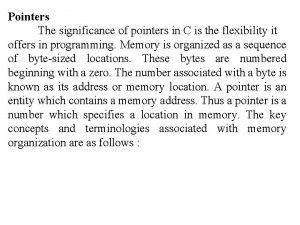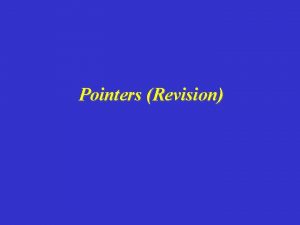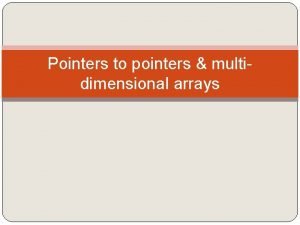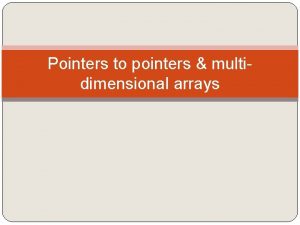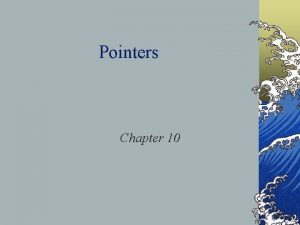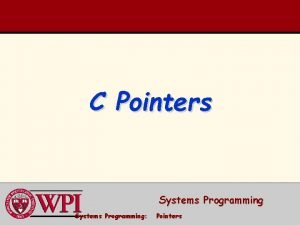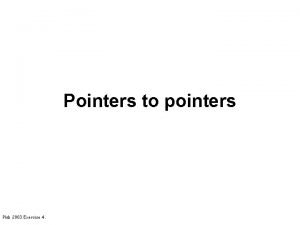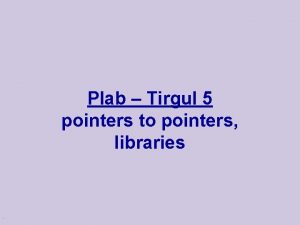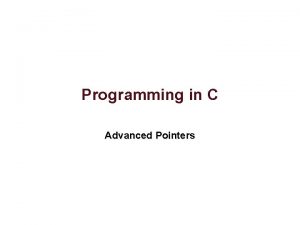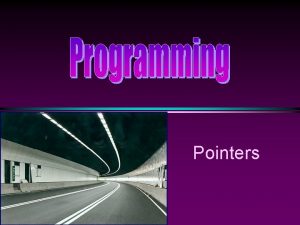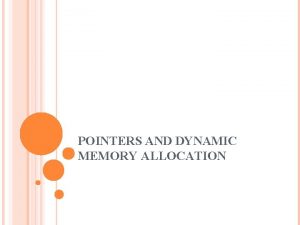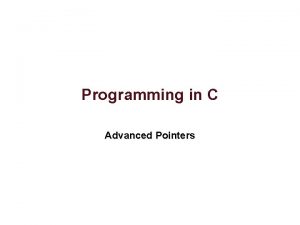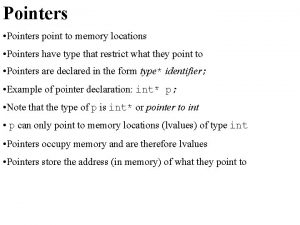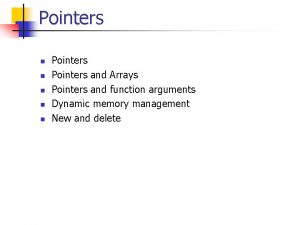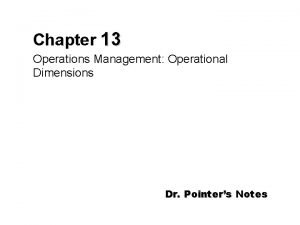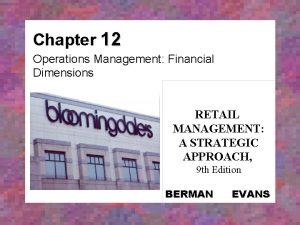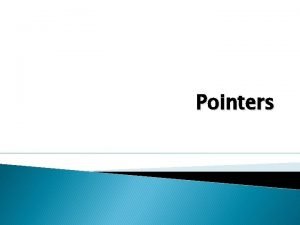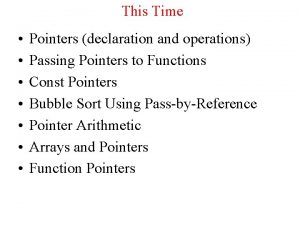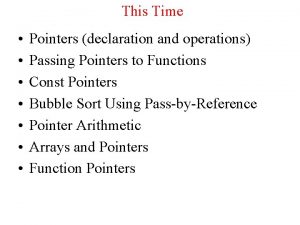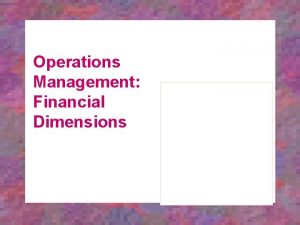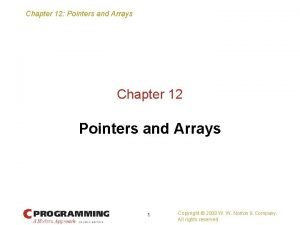Chapter 12 Operations Management Financial Dimensions Dr Pointers






















- Slides: 22

Chapter 12 Operations Management: Financial Dimensions Dr. Pointer’s notes

Chapter Objectives ³ To define operations management ³ To discuss profit planning ³ To describe asset management, including the strategic profit model, other key business ratios, and financial trends in retailing ³ To look at retail budgeting ³ To examine resource allocation 12 -2

Operations Management • Operations Management is the efficient and effective implementation of the policies and tasks necessary to satisfy the firm’s customers, employees, and management and stockholders. • Managers must be knowledgeable of the major financial ratios and statements which can help in planning and evaluating the success of a retail operations. 12 -3

Profit Planning One of the most important statement to understand is the P & L Statement ¯ Profit-and-loss (income) statement – Summary of a retailer’s revenues and expenses over a given period of time, usually a year. – Review of overall and specific revenues and costs for similar periods and profitability 12 -4

Major Components of a Profit-and-Loss Statement • Net Sales • Cost of Goods Sold • Gross Profit (Margin) • Operating Expenses • Taxes • Net Profit After Taxes 12 -5 Net Sales $330, 000 CGS $180, 000 Gross Profit $150, 000 Operating Expenses $ 95, 250 Other Costs $ 20, 000 Total Costs $115, 250 Net Profit before Taxes $ 34, 750 Taxes $ 15, 500 Net Profit after Taxes $ 19, 250

Major Components of P & L Statements • Net Sales – revenues minuses returns, markdowns and employee discounts • Cost of Goods Sold- amount paid for merchandise, less discounts. • Gross profit (margin), the difference between net sales and cost of goods sold. • Operating expenses – the cost of running a retail business • Taxes – payments of federal, state and local government taxes • Net profits after taxes - - profit after all taxes and expenses have been paid 12 -6

Asset Management ¯ The Balance Sheet- itemizes a retailers assets, liabilities and network for specific time – Assets- total amount of item with monetary value Current assets – cash on hand Fixed assets – non liquid assets such as property, building, fixtures, equipment and etc – Liabilities – financial obligations owed by retailer – Net Worth- assets minus liabilities (value of business) – Net Profit Margin- performance measures –ratio Net profit/total revenue – Asset Turnover- performance measure that – Return on Assets- performance measure – Financial Leverage – performance measurer 12 -7

Performance Measures • Asset Turnover = Net sales Total assets Return on Assets = Net profit margin X Asset Turnover Financial Leverage = Total Assets Net Worth 12 -8

Assessment of Ratios • Asset Turnover - Best to have ratio greater than 2 because it shows that assets are being used more efficiently • Return on Assets - Ratios close to 1 are good because it shows that assets are properly being utilized • Financial Leverage Ratio – around 2 or less is better. High ratios indicate much higher debt. Need to compare ratio with industry average for good assessment 12 -9

Figure 12. 1 The Strategic Profit Model Net profit Margin X Asset Turnover Net profit Net Sales total Assets X Financial Leverage = Total Assets = Net Worth Return on Net Worth Net profit Net Worth Return on net worth model can help trouble shoot to determine where the major performance problem is. 12 -10

Other Key Business Ratios ¯ Quick Ratio- cash+ acct receivable/current liabilities ( > 1 is good) ¯ Current Ratio – current assets/current liabilities (>2 is preferred) ¯ Collection Period – accts receivable /net sales X by 365. 40 or above for a store with 30 day credit term is means slow turning receivables. ¯ Accounts Payable to Net Sales- accounts receivable / net sales – ratio above industry average indicates that firm rely on suppliers to finance operations ¯ Overall Gross Profit –net sales /cost of goods , then divided by net sales 12 -11

Financial Trends in Retailing ¯ Slow growth in U. S. economy is adversely affecting retailers ( this causes slow sales, then markdowns, cash flow problems which affects profits) ¯ High number of retail lay offs among workers ¯ Funding sources- 3 major types (next slide) ¯ Mergers, consolidations, - many stronger retailers buying smaller retailers. ¯ Spinoffs- some retailers spinoff divisions that no longer meet profit expectations to generate money to use in core businesses. ¯ Bankruptcies and liquidations- safeguard against mounting debts some firms seek bankruptcy protection –Kmart other just sell assets to pay creditors ¯ Questionable accounting and financial reporting practices 12 -12

Funding Sources ¯ Mortgage refinance (due to low interest rates) ¯ REIT (retail-estate investment trust) to fund construction – Company dedicated to owning and operating income-producing real estate ¯ Initial public offering (IPO)- selling stock to finance expansions. 12 -13

Budgeting ¯ Budgeting outlines a retailer’s planned expenditures for a given time based on expected performance ¯ Costs are linked to satisfying target market, employee, and management goals ¯ Successful retailers operate using budgets because they help achieve objectives. 12 -14

Figure 12. 3 The Retail Budgeting Process -Who develops budget -Budget time frame -How often are budgets planned -What are the cost categories -What level of detail is needed -How flexible will budget be 12 -15 Goals Performance Standards Planned Expenditures Monitoring Results Adjustments Actual Expenditures

Budget Benefits ¯ Expenditures are related to expected performance ¯ Costs can be adjusted as goals are revised ¯ Resources are allocated to the right areas ¯ Spending is coordinated ¯ Planning is structured and integrated ¯ Cost standards are set ¯ Expenditures are monitored during a budget cycle ¯ Planned budgets versus actual budgets can be compared ¯ Costs/performance can be compared with industry averages 12 -16

Preliminary Budgeting Decisions 1) 2) 3) 4) 5) 6) 12 -17 Specify budgeting authority Define time frame Determine budgeting frequency Establish cost categories Set level of detail Prescribe budget flexibility

Cost Categories ¯ Capital expenditures are long term investments in lands, buildings, fixtures and equipments ¯ Fixed costs remain constant for specified period. Variable costs will vary based on performance (cost of goods) ¯ Direct costs- incurred by specific departments, product categories and etc. ¯ Natural account expenses- reported by names of costs, such as salaries, ¯ Functional account expenses – classified on the basis of the purpose of activity for which expenditures are made 12 -18

Ongoing Budgeting Process ¯ Set goals based on customer, employee and management needs ¯ Specify performance standards ( usually related to sales forecast) ¯ Plan expenditures in terms of performance goals: Zero based budgeting – new budget developed from scratch or incremental budgeting where past budget is used as a guide and adjusted ¯ Make actual expenditures ¯ Monitor results ¯ Adjust budget s needed ¯ Cash Flow – relates to the amount and timing of revenues received and expenditures made during a specific time. 12 -19

Resource Allocation • Capital Expenditures • Operating Expenditures – Long-term – Short-term selling investments in and administrative fixed assets costs in running a business Must have a good estimate of capital and operating expenditures. Need to have the funds needed to run the operations. Must be flexible to take advantage of opportunities. Opportunity costs – the possible benefits a retailer forgoes if it invests in one opportunity rather another 12 -20

Enhancing Productivity ¯ Productivity refers to efficiency with which a retail strategy is carried out. ¯ Big question is how can sales and profitability be maintained and costs be decreased. ¯ A firm can improve employee performance, sales per foot of space, and other factors by upgrading training programs, increasing advertising, etc. ¯ It can reduce costs by automating, having suppliers do certain tasks, etc. 12 -21

Questions Look for class assignment with problems. 12 -22
 Operations management chapter 12 inventory management
Operations management chapter 12 inventory management Deped financial management operations manual ppt
Deped financial management operations manual ppt Dimensions of financial planning
Dimensions of financial planning Operations and quality management
Operations and quality management What is tqm
What is tqm Operation management chapter 3
Operation management chapter 3 Operations management chapter 4 forecasting solutions
Operations management chapter 4 forecasting solutions Operations management chapter 2
Operations management chapter 2 Chapter 1 introduction to operations management
Chapter 1 introduction to operations management Operation management chapter 3
Operation management chapter 3 Operations management chapter 10
Operations management chapter 10 Asq control chart
Asq control chart Chapter 8 operations management
Chapter 8 operations management Forecasting in operations management
Forecasting in operations management Crossover chart operations management
Crossover chart operations management Associative forecasting example
Associative forecasting example Chapter 11 operations management
Chapter 11 operations management Operations management chapter 10
Operations management chapter 10 Operations management chapter 4
Operations management chapter 4 Competitive operations strategy
Competitive operations strategy Advantages of pointers
Advantages of pointers Importance of pointers
Importance of pointers C array of pointers to structs
C array of pointers to structs

